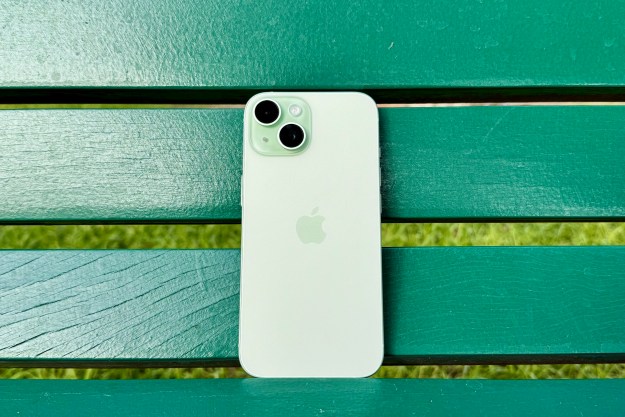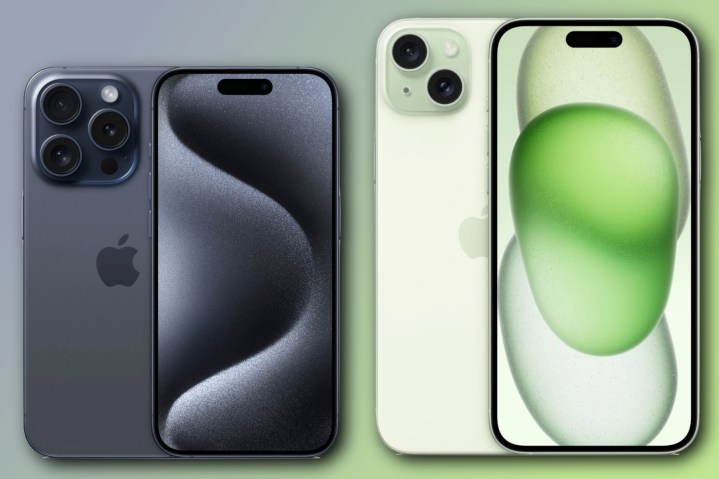
The iPhone 15 lineup has been a huge success for Apple, with the refresh to its product line tempting many people to update to a newer model or to switch over from an Android. Apple has also be re-jigging the available iPhone options, and if you’re after a large-sized iPhone then your luck is in as you now have more options than ever. In older generations, there was just one choice for a larger sized iPhone, which was the iPhone Pro Max. But since the iPhone 14 generation, Apple introduced a iPhone 14 Plus option, and that trend has continued with 2o23’s iPhone 15 generation.
- iPhone 15 Pro vs. iPhone 15 Plus: specs
- iPhone 15 Pro vs. iPhone 15 Plus: design
- iPhone 15 Pro vs. iPhone 15 Plus: display
- iPhone 15 Pro vs. iPhone 15 Plus: performance and battery
- iPhone 15 Pro vs. iPhone 15 Plus: cameras
- iPhone 15 Pro vs. iPhone 15 Plus: software and updates
- iPhone 15 Pro vs. iPhone 15 Plus: special features
- iPhone 15 Pro vs. iPhone 15 Plus: price and availability
- Overall winner: iPhone 15 Pro
Those who are looking for an upgrade over the base iPhone now have two promising options to choose from: either the iPhone 15 Plus, which offers basically the same iPhone 15 experience but in a bigger size, or the higher-end (and more expensive) iPhone 15 Pro. The question of whether you should get the Plus or the Pro comes down to your priorities: the tradeoff is between a larger body and bigger screen for the Plus, or a more compact size but with higher specs of the Pro. There’s also the cost to consider, with the Pro coming in at a higher price than the Plus. We’ve put the two options side by side to help you decide which option you should get if you’re looking to upgrade.
iPhone 15 Pro vs. iPhone 15 Plus: specs
| iPhone 15 Pro | iPhone 15 Plus | |
|---|---|---|
| Size | 146.6 x 70.6 x 8.25mm (5.77 x 2.78 x 0.32 inches) | 160.9 x 77.8 x 7.8mm (6.33 x 3.06 x 0.31 inches) |
| Weight | 187 grams (6.60 ounces) | 201 grams (7.09 ounces) |
| Screen | 6.1-inch always-on Super Retina XDR OLED with 120Hz ProMotion | 6.7-inch Super Retina XDR OLED |
| Screen resolution | 2556 x 1179 pixels at 460 pixels-per-inch | 2796 x 1290 pixels at 460 pixels-per-inch |
| Operating system | iOS 17 | iOS 17 |
| Storage | 128GB, 256GB, 512GB, 1TB | 128GB, 256GB, 512GB |
| MicroSD card slot | No | No |
| Tap-to-pay services | Apple Pay | Apple Pay |
| Processor | Apple A17 Pro | Apple A16 Bionic |
| Camera | Rear: 48-megapixel (MP) main camera (wide), 12MP Ultrawide, 12MP telephoto, LiDAR Scanner
Front: 12MP TrueDepth |
Rear: 48-megapixel (MP) main camera (wide), 12MP ultrawide
Front: 12MP TrueDepth |
| Video | 4K at 24/25/30/60 frames per second (fps)
1080p HD at 25/30/60 fps HDR video with Dolby Vision up to 4K at 60fps Slow motion 1080p at 120/240 fps ProRes video recording up to 4K at 60fps with external recording Macro video recording |
4K at 24/25/30/60 frames per second (fps)
1080p HD at 25/30/60 fps HDR video with Dolby Vision up to 4K at 60fps Slow motion 1080p at 120/240 fps |
| Cellular | 5G mmWave (U.S. models only) 5G (sub-6GHz), Dual eSIM with Physical SIM on non-U.S. models only. | 5G mmWave (U.S. models only) 5G (sub-6GHz), Dual eSIM with Physical SIM on non-U.S. models only. |
| Bluetooth version | Bluetooth 5.3 | Bluetooth 5.3 |
| Ports | USB-C | USB-C |
| Water resistance | IP68 | IP68 |
| Battery | Video playback: 20 to 23 hours Audio playback: 75 hours 20W fast charging |
Video playback: 20 to 26 hours Audio playback: 100 hours 20W fast charging |
| App marketplace | App Store | App Store |
| Network support | All major carriers | All major carriers |
| Colors | Natural Titanium, Blue Titanium, White Titanium, Black Titanium | Blue, Pink, Yellow, Green, Black |
| Price | Starting at $999 | Starting at $899 |
iPhone 15 Pro vs. iPhone 15 Plus: design
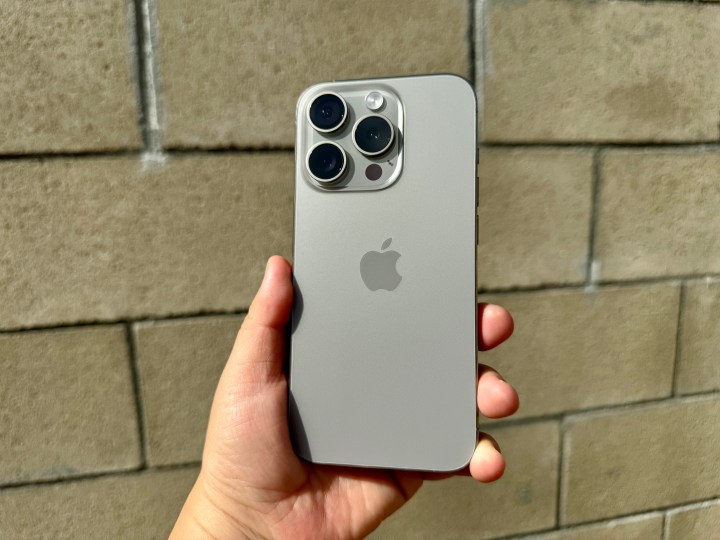
The name of the game for Apple’s iPhone 15 Pro lineup this year is titanium, with both premium models gaining a more brushed metallic look and shedding quite a bit of weight over their stainless steel predecessors.
In practical terms, this means that the iPhone 15 Pro now comes in lighter than the iPhone 15 Plus. As odd as it seems in light of their size differences, last year’s iPhone 14 Pro weighed slightly more than the iPhone 14 Plus. However, this year, the iPhone 15 Pro is 14 grams lighter than the iPhone 15 Plus, which is as it should be.
Beyond the weight are a few other aesthetic differences. The iPhone 15 Pro comes in an array of rather staid colors that keep with Apple’s titanium theme: Natural Titanium, Blue Titanium, White Titanium, and Black Titanium. By contrast, the iPhone 15 Plus features an aluminum construction with a palette of pastels — blue, pink, green, and yellow — joining basic black.

For the first time since 2019, there’s no (PRODUCT)RED model in the standard iPhone lineup this year, and the other colors aren’t exactly what we’d call punchy. Apple has adopted a new process to infuse the color into the back glass for a deeper, matte look, but they’re still unmistakably pastels, and you could be forgiven for mistaking what Apple calls “blue” for a silvery-white.
However, the most notable design change in this year’s iPhone 15 Plus is in the ergonomics. Apple has managed to balance things out a bit more and subtly curved the edges so it no longer feels like you’re carrying around a brick the way Apple’s previous plus-sized iPhones did. Apple has done the same with its titanium iPhone 15 Pro, but 6.1-inch models were less unwieldy to begin with, so while it makes a difference on both iPhones, it’s much more noticeable on the iPhone 15 Plus.
The entire iPhone 15 lineup has also finally abandoned Apple’s proprietary Lightning port in favor of the industry-standard USB-C, which will provide much broader accessory compatibility without having to fiddle with dongles. It’s a nice change, but it doesn’t really change the visual design, as the port remains in the same place it’s always been on the bottom edge of the iPhone.
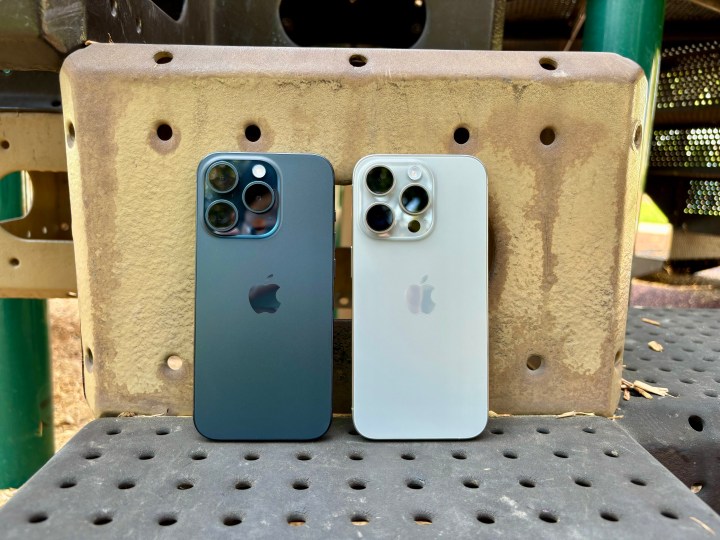
The iPhone 15 Pro and iPhone 15 Plus feature the same level of IP68 water resistance that’s been standard on all of Apple’s iPhones since the 2020 iPhone 12 lineup. Specifically, they can handle immersion in up to six meters of water for up to 30 minutes and are resistant to accidental spills from common liquids such as soda, beer, coffee, tea, and juice. Both models are equally durable, featuring Apple’s Ceramic Shield glass, although that only covers the front. The rear is still standard glass, even on the titanium iPhone 15 Pro.
When it comes to design, the decision between the iPhone 15 Pro and iPhone 15 Plus will ultimately be about screen size and aesthetics. They’re evenly matched in terms of durability and build quality, and the rest is subjective, so we’re calling this a tie — the winner here is a matter of personal preference.
Winner: Tie
iPhone 15 Pro vs. iPhone 15 Plus: display
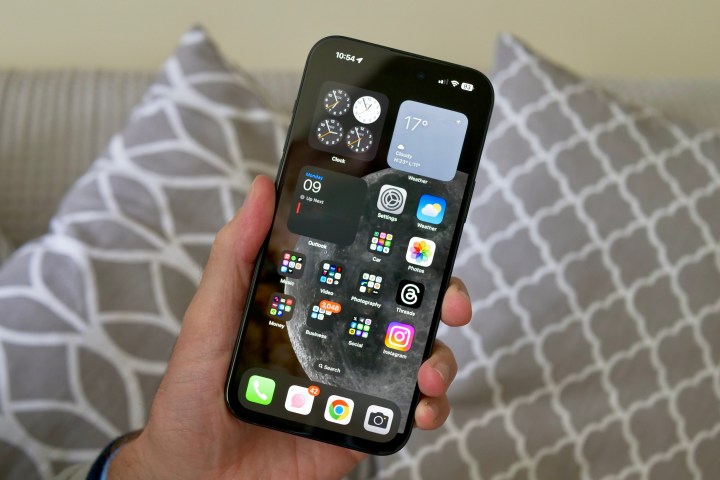
The iPhone 15 Plus gets two significant display improvements over its 2022 predecessor. The first and most noticeable change is that the Dynamic Island that debuted on the iPhone 14 Pro is now available across the entire iPhone 15 lineup.
What you may not notice right away is that the iPhone 15 Plus is also much brighter. The display can now hit 1,600 nits of peak HDR brightness and 2,000 nits outdoors.
This puts the iPhone 15 Plus display much closer to the iPhone 15 Pro, which retains those same peak brightness levels from last year’s iPhone 14 Pro and still features the same Dynamic Island. Other than the obvious size difference, you’ll have a hard time telling the two screens apart at a glance. Both use Apple’s Super Retina XDR (OLED) screens with the same 460 pixels per inch (ppi) density, wide P3 color gamut, and True Tone display.
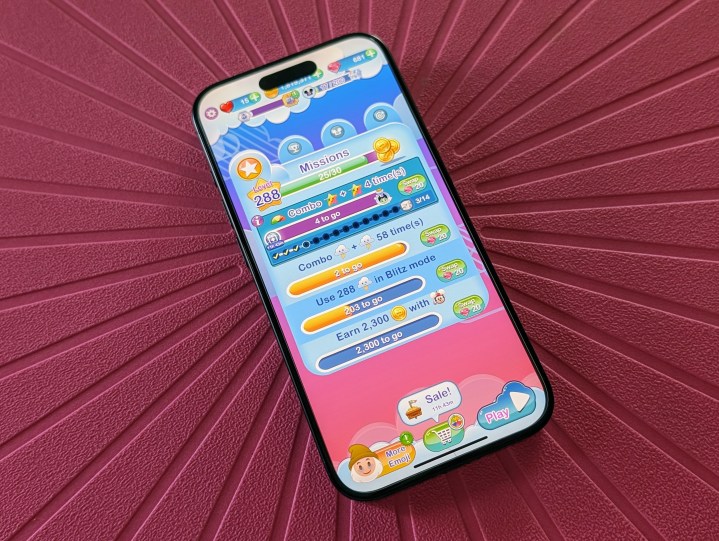
However, the iPhone 15 Pro gets a meaningful edge in its adaptive refresh rate, which also powers the always-on display. The iPhone 15 Plus is still a fixed 60Hz screen with no always-on display capability, while the iPhone 15 Pro Display can go from 10Hz to 120Hz during regular operation and drop to 1Hz in always-on mode.
Apple calls this its ProMotion technology. It not only provides buttery-smooth scrolling and better support for fast-paced action games but also improves battery life for streaming video since it can drop the refresh rate to 24Hz or 30Hz to match the frame rate of whatever you’re watching.
It’s a significant enough difference to make for a tough call between the two models, as you’re stuck deciding between a larger 60Hz screen or a smaller screen with a faster, always-on display. Nevertheless, size isn’t everything, and a 60Hz display in a $900 phone feels a bit stingy in 2023, so we’re calling this one at least slightly in favor of the iPhone 15 Pro.
Winner: iPhone 15 Pro
iPhone 15 Pro vs. iPhone 15 Plus: performance and battery
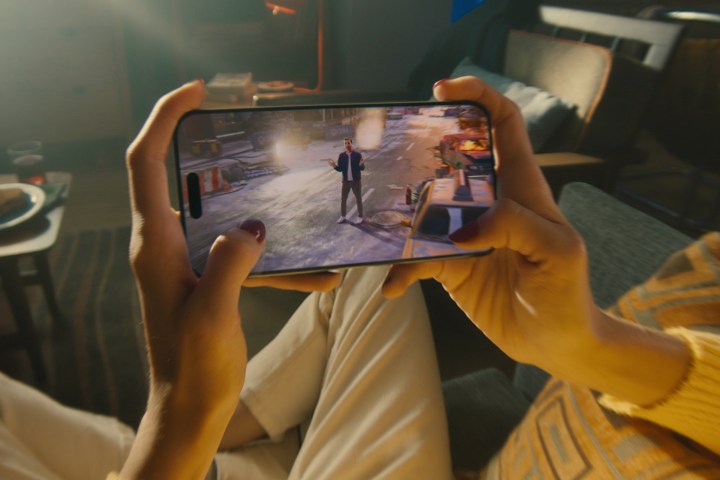
If you’re looking for top performance, there’s no contest between the iPhone 15 Pro and the iPhone 15 Plus. That’s because Apple now uses its best chips each year only in its most expensive iPhone models. This started with last year’s iPhone 14 lineup, which adopted the A16 Bionic for its Pro models while leaving the standard ones on the 2021 A15 chip from the iPhone 13 Pro.
However, that separation was nothing compared to what Apple has done this time around. This year, the iPhone 15 Pro takes a giant leap forward over the iPhone 15 Plus thanks to a new A-series chip that’s souped up to the point where Apple has dropped the “Bionic” designation used for its chips since 2018 and given it a new name: the A17 Pro.
The new A17 Pro has been fabricated using a new 3-nanometer process and features a significantly redesigned GPU with features like hardware-accelerated ray-tracing that promises to turn the iPhone 15 Pro into a gaming powerhouse. Exclusive console titles like Resident Evil Village have already appeared on the App Store that run only on the iPhone 15 Pro and iPhone 15 Pro Max, and more are on the way, including Ubisoft’s Assassin’s Creed: Mirage.
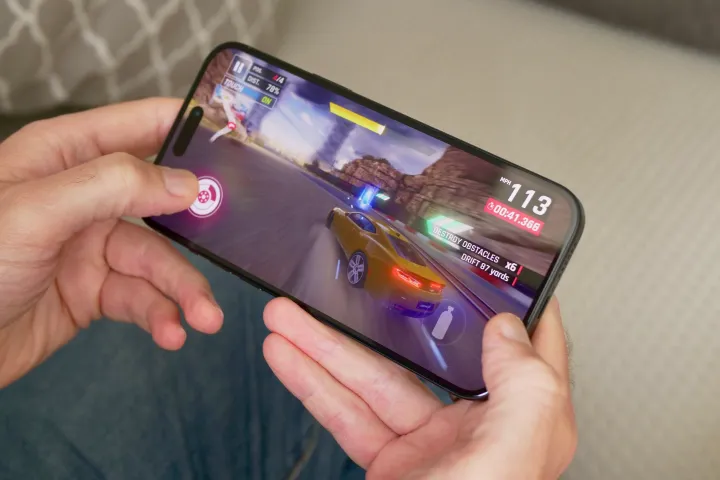
However, the iPhone 15 Plus is no slouch by any stretch of the imagination. The A16 Bionic is an impressively powerful chip that can still handle the most demanding mobile games — the emphasis here being on the word “mobile.” The A17 Pro is about delivering the power needed for full console games. Hardcore mobile gamers will appreciate the extra power, but we don’t think anybody will be disappointed by what the iPhone 15 Plus offers for everything from handling complex AI tasks to delivering impressive photos through computational photography.
On the battery side, the iPhone 15 Plus gets an edge over the iPhone 15 Pro due to having more room for a larger battery. Apple promises up to 26 hours of local video playback and 100 hours of audio listening on the iPhone 15 Plus versus 23 hours and 75 hours on the iPhone 15 Pro. However, streaming video playback is the same at 20 hours, likely bolstered by the iPhone 15 Pro’s ability to lower the ProMotion display’s refresh rate to conserve power.
Since it has a larger battery, the iPhone 15 Plus charges more slowly than the iPhone 15 Pro; both will get up to a 50% charge in 30 to 35 minutes with a 20-watt adapter, but neither features the super-fast charging popular on many Android smartphones. You get 15-watt wireless charging on both if you use a MagSafe-certified charger; otherwise, they only support the same 7.5-watt Qi charging as prior iPhone models.
Since the iPhone 15 Pro wins out on performance, while the iPhone 15 Plus provides superior battery life, we’re calling this one a tie.
Winner: Tie
iPhone 15 Pro vs. iPhone 15 Plus: cameras

For most flagship smartphones, the rule of thumb is that if you want the best camera system, you need to go for the premium models. That’s still just as true with the iPhone 15 lineup, but this year, the iPhone 15 Plus gets much closer to the iPhone 15 Pro in its photographic capabilities.
For one thing, the iPhone 15 Plus gains the 48-megapixel sensor quality that was the exclusive domain of last year’s iPhone 14 Pro, which not only improves the quality of the photos you’ll be able to take with it but also provides a virtual 2x optical zoom — a first for Apple’s non-Pro iPhones.
Although you still only have two physical cameras, the new 2x mode uses the center 12 megapixels of the 48MP sensor to provide the same focal length you’d get from a third lens. This also powers improved Portrait mode photography and allows for continuous zoom in 4K Cinematic mode. Apple calls this its “advanced dual-camera system” to distinguish it from prior models. The downside is that even though the iPhone 15 now shoots 24MP photos by default, photos taken with the 2x zoom will only be captured in 12 megapixels.
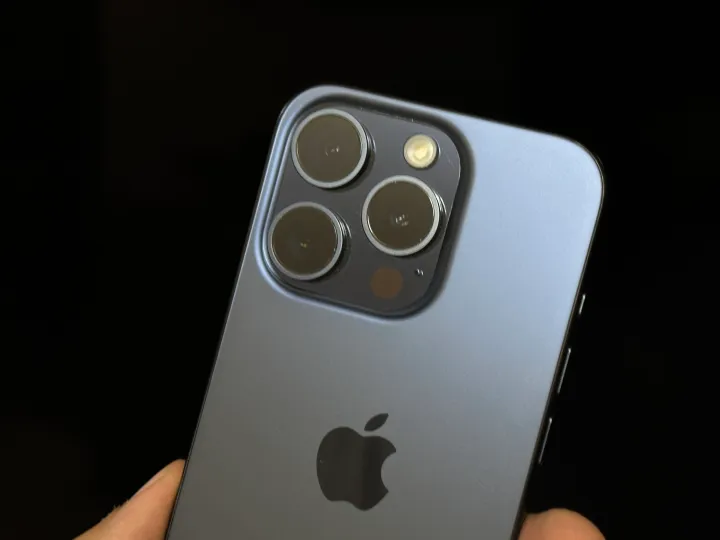
Mind you, the same is also true when shooting in 2x on the iPhone 15 Pro, which uses the same technique of cropping the 48MP sensor to produce a virtual optical zoom from the main lens. However, the iPhone 15 Pro compensates for this by offering a third camera with an optical 3x zoom lens. It also includes a lidar sensor for faster and more accurate Portrait mode depth mapping, the ability to take portrait shots in Night mode, and faster autofocus in low-light conditions. You also get macro photography and support for saving images in Apple ProRAW for more powerful editing capabilities after the fact.
Despite the more powerful A17 Pro chip in the iPhone 15 Pro, both models offer the same computational photography features, including Apple’s Photonic Engine and Deep Fusion technology and Smart HDR 5 for photos. Every photo taken on an iPhone 15 also gets depth data stored with it, even if you’re not using Portrait Mode. This lets you apply a Portrait mode effect to photos after the fact.
The Smart HDR 5 and other image signal processing improvements result in photos that are dynamic, colorful, and much more true-to-life than the iPhone 14 lineup, which tended to lean toward clinical. Under ideal lighting conditions, the iPhone 15 Plus and iPhone 15 Pro produce impressively similar results, but the iPhone 15 Pro edges it out in low light conditions thanks to improved sensors with better optical image stabilization and the adaptive True Tone flash that remains exclusive to the iPhone Pro models, plus the 3x optical zoom that provides more creative versatility.
While all those things make the iPhone 15 Pro a clear winner, we don’t think anybody but the most serious photography enthusiasts will be disappointed by what the iPhone 15 Plus can deliver, especially with the camera improvements Apple has packed into it this year.
Winner: iPhone 15 Pro
iPhone 15 Pro vs. iPhone 15 Plus: software and updates

The iPhone 15 Pro and iPhone 15 Plus both ship with iOS 17, and other than features that are tied to obvious hardware differences like the iPhone 15 Pro’s new Action button, the user experience is mostly the same on both.
The iPhone 15 Pro and iPhone 15 Plus will also likely remain in lockstep for software updates for the next five or six years. Apple doesn’t make specific upgrade promises, but it has a proven track record of supporting its iPhones with major software updates for at least five years, so there’s every reason to believe the iPhone 15 models will be upgradeable all the way through to iOS 22.
Winner: Tie
iPhone 15 Pro vs. iPhone 15 Plus: special features
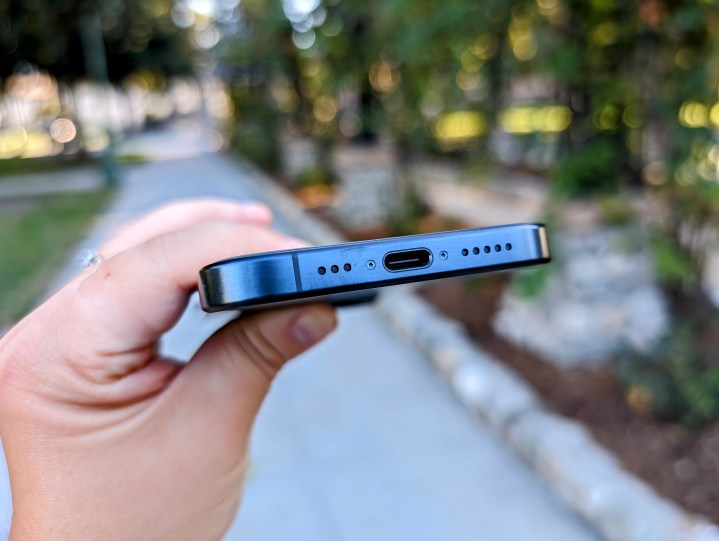
Although Apple has finally adopted USB-C across the entire iPhone 15 lineup, only the iPhone 15 Pro gets faster data transfer speeds. The iPhone 15 Plus may have a new port, but it’s capped at the same speeds as last year’s Lightning port.
To put that in perspective, the iPhone 15 Pro supports USB 3.1 Gen 2, which translates to transfer speeds of up to 10Gbps. Meanwhile, the iPhone 15 Plus only offers the same 480Mbps USB 2.0 speeds that have been delivered through the Lightning port since it was introduced in 2012.
How much this matters in a world where most people rarely plug their iPhones into a Mac or PC is another question, but if you regularly transfer videos, photos, and music to your computer the old-fashioned way, there’s no doubt that the iPhone 15 Pro will go much faster. You’ll have to supply your own USB 3 cable, though, as the one Apple includes in the box is only certified for USB 2.0 speeds.
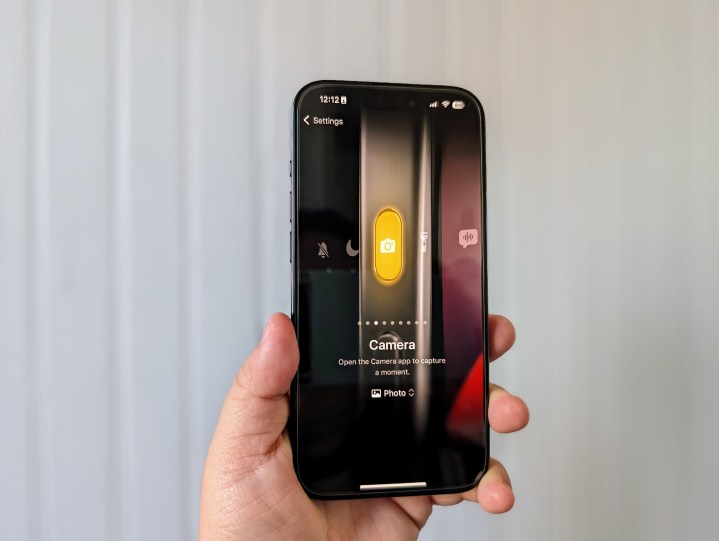
The faster data transfer on the iPhone 15 Pro is mostly a nod to the ginormous files the Pro models can capture. While a 48MP photo or a clip of 4K video at 60 frames per second (fps) isn’t going to be small, that’s nothing compared to ProRAW photos, which come in a 75MB per shot, or 4K ProRes video at 30fps, which can easily run 5GB per minute. The iPhone 15 Pro can also now record 4K ProRes video at 60 fps, but only to an external drive using the USB-C port with an appropriate USB 3 cable, and will soon be able to capture Spatial Videos that can played on Apple’s new Vision Pro mixed-reality headset.
However, the most unique feature of the iPhone 15 Pro for everyday use is the new Action button in place of the classic ring/silent switch on the side. This multi-function button can do much more than mute your alert sounds, including triggering custom routines in Apple’s Shortcuts app.
Winner: iPhone 15 Pro
iPhone 15 Pro vs. iPhone 15 Plus: price and availability
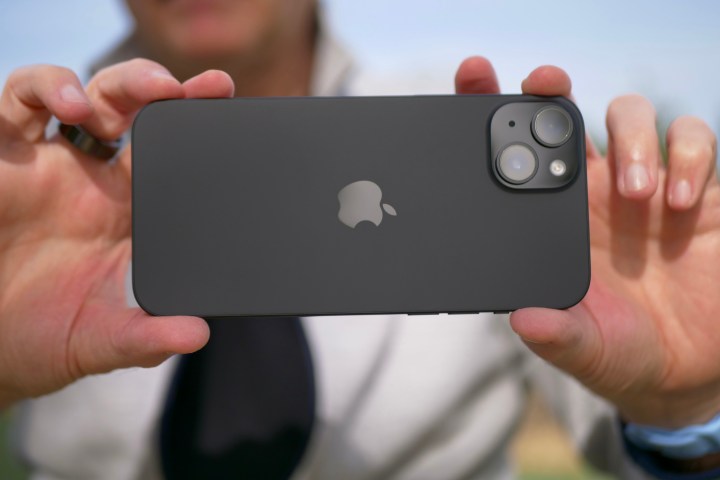
The iPhone 15 Pro and iPhone 15 Plus are available from Apple and most carriers and other retailers.
The iPhone 15 Pro starts at $999 for 128GB, with 256GB, 512GB, and 1TB upgrades for $1,099, $1,299, and $1,499. Available colors are Natural Titanium, Blue Titanium, White Titanium, and Black Titanium.
The iPhone 15 Plus starts at $899 for the base 128GB model, with 256GB and 512GB versions available for $999 and $1,199, respectively. It’s available in Blue, Pink, Green, Yellow, and Black.
Overall winner: iPhone 15 Pro

With an insanely powerful A17 Pro chip, a lightweight titanium design, and a pro-level camera system, the iPhone 15 Pro delivers a lot of perks for only $100 more than the iPhone 15 Plus, making it not only a more impressive iPhone but also better value for your money.
However, the decision between the two isn’t necessarily as simple as looking at the spec sheet. If getting the largest possible screen on an iPhone is more important than playing console games or taking the best possible photos, the iPhone 15 Plus is still a solid choice — especially considering you’ll now need to pay $300 more to get the similarly-sized iPhone 15 Pro Max. The iPhone 15 Plus has an expansive and vibrant OLED screen, great battery life, and a new design that’s more balanced and comfortable to hold. Plus, it features the best year-over-year camera improvements we’ve seen on an iPhone since Apple added a second lens to its standard model in 2019.
Editors' Recommendations
- How to find your phone number on iPhone or Android
- iPhone SE deals: Refurbished 2nd and 3rd Gen iPhones
- Best refurbished iPhone deals: Get an iPhone 14 for $513
- An Apple insider just revealed how iOS 18’s AI features will work
- Best iPhone deals: Save on iPhone 15, iPhone 15 Pro Max and more


